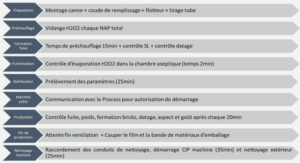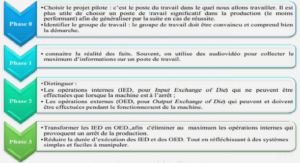As discussed in the introduction chapter, glacierized watersheds of the subarctic host a large number of potential water sources. Glaciers, the most studied water source, play a dominant role in the watershed they belong to (Kang et al., 2009). However, other water sources, most of them being climate sensitive, shall also be considered as potential important contributors to glacierized watershed outflows. in a conceptual way, the different features that play a role in the subglacial environment. In addition to the glacier related processes, groundwater (Walvoord et Striegl, 2007) is highly dependent on the permafrost conditions (Janowicz, 2011) in those environments, ice cored moraines (Moorman, 2005) or icing (Moorman et Michel, 2000) and rock glaciers appear to also be important factors.
Runoff from the glacier is composed of snowmelt on the glacier (1) and glacier melt (2). Gradually, the snowmelt will occur at higher elevation as summer progresses leaving the glacier uncovered and therefore melting at a faster rate. When snow melts on the edges of the glacier, ice-cored moraines (4) and buried-ice (3) are also exposed to melt during summer season; due to their insulating debris cover, buried ice melt volumes are dependent on size and energy inputs. As snow melts, it creates a surface runoff (6) that progressively infiltrates the soil and finds its way into the hydrological processes within permafrost. Surface runoff and precipitation (7) are the major hydrological actors in seasonal growth of the permafrost active layer, they supply supra-permafrost groundwater sources (11) but will also contribute to hydraulic processes acting upon sub- (8) and intra-permafrost (10) groundwater. Due to North-facing slopes receiving less solar radiation, they usually have more permafrost (Carey et Woo, 1998; 2001) and higher snow water equivalent (SWE) prior to melt. Groundwater is also commonly found lower in the valley where it may find soils to infiltrate or in phases of permafrost to permeate through.
Glaciers
Glaciers present a substantial freshwater source which globally supply water to one sixth of the world’s population (Barnett, Adam et Lettenmaier, 2005). Despite growing concerns for the health of glaciers and their implications in water supplies (Cruz R. V. et al., 2007), their global contribution is not yet well understood (Schaner et al., 2012). Glaciers store water in the solid form in the accumulation area during accumulation months and release most of their contribution during the ablation season.
Glaciers are complex entities, although their contribution is confined to meltwater for the ablation zone, there are multiple pathways it can follow; surface (supraglacial), internal (englacial), and basal (subglacial) all contribute to runoff composition (Boon, Flowers et Munro, 2009). The role and activity of those pathways in the hydrological systems are variable in time and space (Irvine-Fynn et al., 2011) and can be difficult to isolate.
Runoff volumes from glaciers follow the diurnal cycle. They are affected by melting season variability as well as accumulation volumes, consequently making accurate response projections difficult. Their runoff volumes are controlled by i) melt water production at the glacier-atmosphere interface, ii) volume of water it stored during the accumulation period and iii) the pathways melt water employ within the glacier surface whether it is supra-, en- or subglacial (Chesnokova, 2015). Supraglacial melt is the dominant source of meltwater for most glacierized area (Hock, 2005), as most of the melt occurs at the glacier surface. On the surface of the glacier, supraglacial channels are eroded onto the surface and meltwater finds its way into the englacial and subglacial systems via crevasses and moulins. Either through ice percolation (slow system) or englacial channels (fast system) the water will drain into the glacier’s hydrological pathways (Benn et Evans, 1998). With increasing volumes during the ablation season, the pressure created within the glacier will lead to wider channels, faster snowline retreat and enhanced hydrofracturing, hence the ever changing drainage system course during melting season.
Daily, meltwater reaches its peak volume shortly after the shortwave radiation and temperature maxima (Chesnokova, 2015). Seasonally, the annual runoff reaches its peak during the ablation season, when average radiation and temperature are at their peak.
There are multiple types of glaciers based on location, form and temperature regimes. Glaciers from the Northern St. Elias slopes are classified as mainly polythermal (Benn et Evans, 1998). Polythermal glaciers are defined as “ice masses displaying a perennial concurrence of temperate (temperature at melting point) and cold ice (temperature below melting point)” (Irvine-Fynn et al., 2011). Their particular thermal regime makes the supraglacial pathway dominant compared to englacial and subglacial channels, this being at least true in the cold ice section of the glacier.
Ice-Cored Moraines
Moraines are glacially accumulated piles made up of glacial debris, which range from small flour-like soil to large boulders (Menzies, 2002). There are two main types of moraines: lateral moraines form at the edges of the glacier pushed by ice flow over time, and terminal moraines, as their name suggests, are at the foot of the glacier marking the maximum advance of the glacier (Barr et Lovell, 2014).
Ice-cored moraines are ice bodies that comprise a discrete body of glacier ice covered with morainic materials (Singh, Singh et Haritashya, 2011). The formation of moraines is based on a combination of supra-, en-, and subglacial debris being pushed to the edges. Proglacial debris are forced outward during glacier advance, subglacial debris can be squeezed from upward pressure as well as surrounding ridges contributing to the amount of sediment (Lukas et al., 2005).
For an ice-cored moraine to emerge, ice must be isolated from the glacier during advances but covered by enough debris to shield it from melting, thus creating a differential ablation rate than that of the glacier’s (Lukas, 2011). Lukas (2011) proposed three buried-ice formations; active ice near the glacier’s boundaries covered in sediment and debris are cutoff during negative mass balance, steady delivery of debris at the same location (depocenters) can lead to thickened supraglacial material cover changing the ablation rate, and finally existing dead ice can be engulfed by advancing glaciers. The debris cover affects the thermal conductivity and therefore the insulation provided by the debris above and below the ice affects the melting rate and by consequence the volume of water contributed. The thicker the debris cover, the slower the ablation rate (Brook et Paine, 2012), exposing bare ice can increase ablation rate up to 30 cm in a 1.5 month period (Johnson, 1992).
INTRODUCTION |






